Grieving Tiananmen as US Cops Crush Campus Protests
To reclaim the legacy of Tiananmen for emancipatory ends, we must release it from Cold War politics and place it in a longer, larger history of struggle.
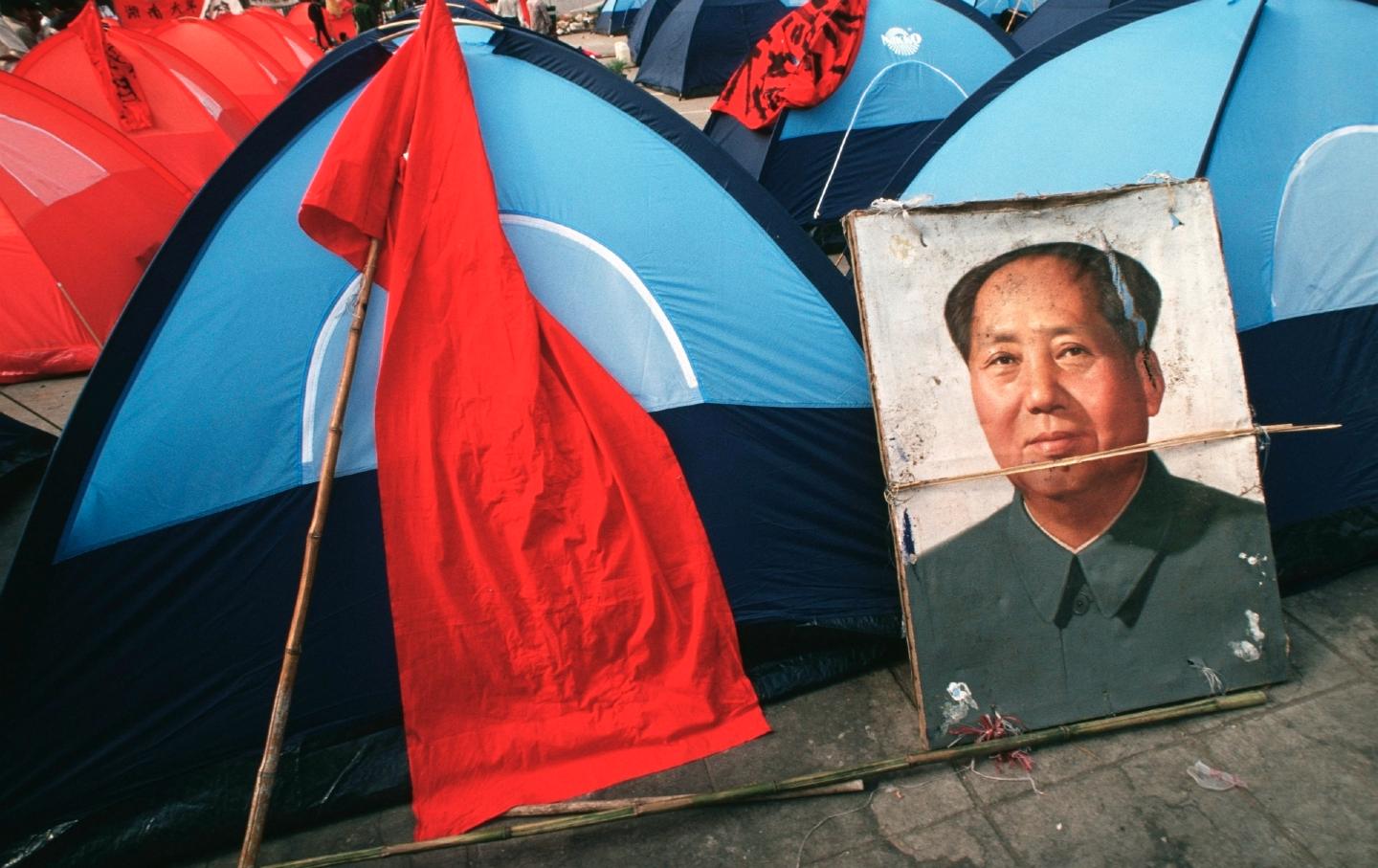
Pro-democracy protesters filled Tiananmen Square for weeks prior to the bloody June 4 crackdown.
(Peter Charlesworth / LightRocket via Getty Images)At the sight of the tent, my instinct was to check for blood stains, but the light-blue nylon fabric showed little sign of wear. A placard explained its origin: In the spring of 1989, this tent was among the many pitched in Beijing’s Tiananmen Square, where it sheltered student demonstrators from across the country. In the early hours of June 4, as more than 180,000 troops forced their way through city streets to clear out the square, the owner of the tent stuffed it into a bucket and retreated to safety with his other belongings.
The blue tent is now on display at the June 4th Memorial Museum in New York City. Located on the fourth floor of an office building in midtown Manhattan, the exhibit opened in 2023—two years after the closure of the original museum in Hong Kong.
Much of the display is dedicated to Hong Kong. Residents of the then-British colony donated money and supplies, including tents, to students in the mainland. Later, Hong Kong provided an escape route for hundreds of Tiananmen dissidents. An annual vigil in Victoria Park commemorated the victims of the 1989 crackdown and affirmed the freedoms that Hong Kongers enjoyed.
In 2021, Victoria Park stood empty for the first time in 32 years on June 4. New security laws in Hong Kong have made public mentions of the massacre a jailable offense. Salvaged fragments of the forbidden history are forced underground or into exile.
When tanks rolled into Tiananmen Square, my mother was pregnant with me. Six hundred miles south of Beijing, the wave of student activism also swept over my hometown of Hefei. Here at the museum, I tried to picture my young mother on that fateful morning. Her swelling body leaned against the windowsill as she drew the shades. Were there students marching outside? She would not look. Silence, she decided, would protect her and her child.
I moved to the United States in 2009 to pursue my PhD in physics at the University of Chicago. One of the first things I did after arriving was to google “Tiananmen, 1989.” I had sensed the presence of a seismic event in my birth year by stumbling upon the hazy contours of censorship—a deleted candle emoji, a cryptic date written as “May 35”—but I had never sought the truth.
For many Chinese people my age or younger, finding out what happened at Tiananmen marks a moment of political awakening, a painful rupture from the past one used to know. Tiananmen is no longer a place; it is an event encapsulating the best and the worst of China. It becomes an open wound. To hold this knowledge is to assume a responsibility. One feels constantly interrogated: What can you, the living, do to not betray the dead?
To simply answer “never forget” is to evade the difficult ethics of remembering. The magnitude of calamity during Tiananmen can render any sensible soul speechless. But for those of us who are spared the firsthand trauma and accorded the luxury of critical distance, bearing witness demands not melancholia but to examine how the past is curated and what purpose it serves. A memorial for Tiananmen, like the June 4 Museum, is not just about loss. In these spaces, grief is singed with rage, and each recollection is a call for political change in China.
There’s an old Chinese saying: “Sweet tangerines from south of the Huai River become bitter when planted in the north.” Can the diaspora’s aspirations for the homeland survive on foreign soil? When I arrived at the June 4th Museum on a sullen Wednesday in May, weeks of unrest on US campuses had made this question acute.
My mind immediately conjured up images from the Students for Gaza demonstrations when I saw the blue tent from Tiananmen, and then again when I caught a photo of a face in a newspaper clipping on the other side of the museum. Among the 21 people on Beijing’s Most Wanted list of student protest leaders was Li Lu. The young man in aviator sunglasses is now a trustee at Columbia University. Thirty-five years after Li and his fellow students occupied a square to demand reform in China, encampments have sprung up on campuses across the US to oppose Israel’s ongoing assault on Gaza—facilitated by weapons and political support from the US—that has killed more than 36,000 Palestinians and destroyed every university in the territory. Students are calling on their schools to disclose financial holdings and divest from companies that profit from the war. Administrators, including at Columbia, have responded with mass arrests, harsh disciplinary measures, and violent clearings of the camp sites.
A protest tent from an adversarial state is preserved as a symbol of courage at a US museum; a similar object is criminalized when it challenges establishment power in this country. The contradiction exposes the bounds of American freedom. To reclaim the legacy of Tiananmen for emancipatory ends, not just against the oppressive Chinese regime but against oppression everywhere, one must release it from the distortion field of Cold War politics and place it in a longer, larger history of struggle.
As China moved away from a planned economy in the 1980s, the early years of marketization brought business opportunities and intellectual foment, but also widening disparity, job insecurity, and corruption, all of which propelled the protests that spread from Beijing to the provinces and from campuses to factory floors. Workers joined the students to demand better conditions and greater autonomy for their labor. A succession crisis at the top of the Chinese leadership fragmented the state’s responses.
In the West, the actual demands of the movement were less important than the spectacle of bloodshed; Tiananmen was an aberration in a year of liberation that saw the fall of the Berlin Wall and the final triumph of market liberalism. The cataclysm froze China as a space of exception; its symbolism is distilled in a single frame, that of Tank Man. Western journalists routinely approach random people in Chinese streets or Chinese students overseas to ask whether they recognize the image. This ritualized performance has little regard for the safety of the Chinese interviewees, who become props to affirm an established narrative, to prove the totality of Chinese censorship and the apathy of its people. What’s packaged as journalism is really entertainment for the satisfaction of a self-congratulatory audience.
Amid escalating tensions between the two countries, denouncing China has become a litmus test for allegiance to the US and a personal-branding exercise for many politicians. Atrocities such as the massacre during Tiananmen and the mass internment of Uyghurs in Xinjiang are appropriated to advance domestic agendas. From congressional hearings to the campaign trail, policymakers condemn the evil regime in Beijing and valorize the brave dissidents. One can almost taste the blood at the end of these politicians’ scorching exhortations. But the passion of the rhetoric does not make the speakers trustworthy. Extravagant castigation can also be a disguise for envy. Recent clampdowns on campus protests reveal a disconcerting truth: When many in the US saw scenes from Tiananmen, they imagined themselves holding the guns.
“Send in the National Guard,” urged Senator Josh Hawley on April 22, echoing his colleague Tom Cotton, who suggested deploying the military to quash both student protests in April and the Black Lives Matter movement back in 2020. Two dozen Republican lawmakers, led by Mitch McConnell, demanded that the Department of Education and federal law enforcement “act immediately to restore order” and “prosecute the mobs.” To them, arresting over 2,900 protesters on dozens of campuses was too soft a response.
“We are not an authoritarian nation,” President Joe Biden said at a press conference in May. “But neither are we a lawless country.” The Chinese government regularly makes a cynical comparison of its political system with that in the US by pointing out injustices in the latter. That I am writing this essay here and would not be able to in my birth country refutes the false equivalency. Yet a simple binary of democracy versus authoritarianism demarcated by national borders obscures understandings of both. Freedom and oppression take various forms and manifest in degrees. Even a totalitarian regime cannot extinguish sparks of defiance, and authoritarian structures and forces, behaviors and mindsets also exist in democratic societies.
In the aftermath of Tiananmen, school administrators in China were reluctant to punish students, despite state pressure, and tried to minimize arrests. The Ministry of Education forced the president of Peking University to resign after he expressed empathy for the protesters. The decency of trying to protect students stands in striking contrast to university presidents here who called the police themselves.
Popular
“swipe left below to view more authors”Swipe →Across states and institutions, the same axioms prove true: A leadership that operates in secret treats appeals for disclosure as threats; a governing body insulated from democratic demands cites procedural violations to quell dissent; an administration will always couch its coercive power in depoliticized, managerial language; and an organization’s insistence on neutrality shields it from moral responsibility and upholds an uneven status quo.
Any sizable movement has unsavory elements. To focus on fringe behavior or take scenes out of context is a convenient way to obfuscate the truth and conceal underlying power differentials. The Chinese government used images of burned army vehicles and casualties among soldiers to paint the Tiananmen demonstration as a “counterrevolutionary riot,” while eliding the question of why the military was there in the first place. During the 2019 protests in Hong Kong, Beijing magnified sights of property damage and instances of physical aggression or anti-mainland attitude to delegitimize the demands for democratic freedom. Similar dynamics have been unfolding in portrayals of the encampments here. Concerns for Jewish safety are weaponized to justify police violence. Zionist grievance is prioritized over Palestinian grief.
Ironically, many people in the US who claim that chants of “Intifada!”—“uprising” or “shaking off” in Arabic—are inciting terror applauded the slogan “Revolution of our times” during the Hong Kong protests. (The phrase is now banned in Hong Kong.) The diverging interpretations of essentially the same word reflect racist assumptions that are intensified by geopolitics. Under the Orientalist gaze, Arabs are savage, and Hong Kongers are the “good Asians” who stood up to a nominally communist regime from a center of global capital. The selective outrage over language lays bare the limits of equality under liberalism, in which the freedom of expression extends only to those regarded as fully human, not to the barbarian Other.
Insecure institutions like to blame the “outside agitator” for any dissent. According to Chinese authorities, the youth during Tiananmen were led astray by terrorists, criminals, and conspiracists; the pro-democracy protests in Hong Kong were instigated by “foreign hostile forces.” In the United States, the outside agitators were communists who organized labor unions and civil rights leaders who fought for racial justice. Today, the outside agitators are alumni and community members supporting the Students for Gaza encampments and Chinese state agents infiltrating American minds through TikTok.
I wonder how Li Lu, the Columbia trustee, felt on the night riot police stormed the Morningside campus and arrested scores of students. In 1989, Li helped organize the hunger strike at Tiananmen Square, and his impromptu wedding there galvanized the crowd. With the help of Hong Kong activists, Li escaped to the British colony. The route to smuggle Western goods into China facilitated his risky getaway. Years later, the flow of capital and commerce would pave his way back. After moving to the US and graduating from Columbia University in 1996, Li established a hedge fund. His early investments included Maotai, the luxury Chinese liquor favored by party officials, and BYD, the electric car giant. In 2010, Li visited BYD headquarters in Shenzhen with Warren Buffett, becoming one of the first Tiananmen exiles granted reentry to the country.
Some Tiananmen leaders think Li has forsaken the movement by doing business in China. Others may argue that he has let down the students at his alma mater who are much like his younger self. More important than one man’s paradoxical path, however, are the structural forces that shaped it and the nature of global capitalism it reveals.
China’s rocky integration into the world market prompted the Tiananmen protests. After the crackdown, the US and European governments prohibited arms sales to China, and Israel emerged as a crucial source of advanced weaponry for Beijing, at times drawing Washington’s ire. Since 2010, only Russia has supplied more military equipment and technology to China. Fueled by the insatiable appetites of the military-industrial complex and surveillance capitalism, the Chinese and Israeli governments have found many points of cooperation in their shared mission: to utilize historical victimhood in absolving present-day aggression and to propagandize national trauma for the persecution of minorities. Chinese officials see Israeli counterinsurgency measures against Palestinians as a model for the security regime in Xinjiang. The Israeli cyber-hacking device Cellebrite is popular with Chinese police, and Chinese drones and facial-recognition cameras have been used by Israeli authorities to control the Palestinian population.
Three decades after President Bill Clinton removed human rights conditions from China’s Most Favored Nation status at the urging of US businesses, China has emerged from the periphery of global capitalism to contest US hegemony. In response, Washington has imposed restrictions on bilateral trade and investments. To mask the naked ambitions in economic and military competition, some of the sanctions are wrapped in the language of human rights. US companies are ordered to stop contributing to Chinese state surveillance and ethnic oppression in Xinjiang. But however righteous, the new bans, not unlike the arms embargo after Tiananmen, are weakened when they do not apply to US allies like Israel that commit similar abuses at home and continue to sell the tools to China.
Instead of fetishizing the far and feared, the Students for Gaza protesters insist that scrutiny and change begin with the near and dear. The modern university sits at the nexus of capitalism, imperialism, and militarism through financial investments that profit from dispossession and exploitation, research programs that justify violence and perfect its means, real estate holdings that evade taxes and impoverish local communities, and employment practices that perpetuate racial and gender hierarchies. Building on the legacies of the anti-war movement of the 1960s and the protests against apartheid in South Africa in the 1980s, as well as decades of campus organizing for peace and justice in Palestine, today’s demonstrations are part of a long, transnational struggle that refuses to be subsumed by Cold War rivalry.
More on Tiananmen:
In the spring of 1989, Chinese students marched out of classrooms and walked into history. They followed an ancient tradition of scholars concerning themselves with affairs of the state and having the fortitude to dissent. The students set up tents at the heart of the nation’s capital and turned a monument of state power into the people’s square. As the art historian Wu Hung writes in Remaking Beijing, “Monuments are consequences of revolution…but not revolutions themselves.” In contrast, a protest camp is a revolution in rehearsal, where alternative futures are imagined and enacted. The fragility of the camp preserves its innocence. A dream miscarried still proves the possibility of conception.
The last display at the June 4th Museum is dedicated to the victims and the group known as the Tiananmen mothers. Their children could not be mourned in public, so the mothers made their own lives into shrines. They have devoted themselves to collecting names of the fallen, preserving their memory, and seeking justice. The Chinese government counts on the passage of time for June 4’s final erasure, but grief can extend and collapse time. Ashes of the dead and tears of the living impregnate the earth with sorrow, so every year when spring folds into summer, the air grows damp, and every breath tastes like salt and a little hair.
Thirty-five years ago at Tiananmen Square, students recited the words of Lu Xun, whose prose has stirred the conscience of the nation since the early 20th century. Now, at encampments across the United States, Chinese students have made their presence felt. For them, systems of oppression are intertwined, and so the struggle for liberation must transcend borders. They write on signs, “From Palestine to Xinjiang.” And, like generations of Chinese protesters before them, they quote Lu Xun: “Beyond boundless lands and oceans, countless souls are all connected to me.”
More from The Nation
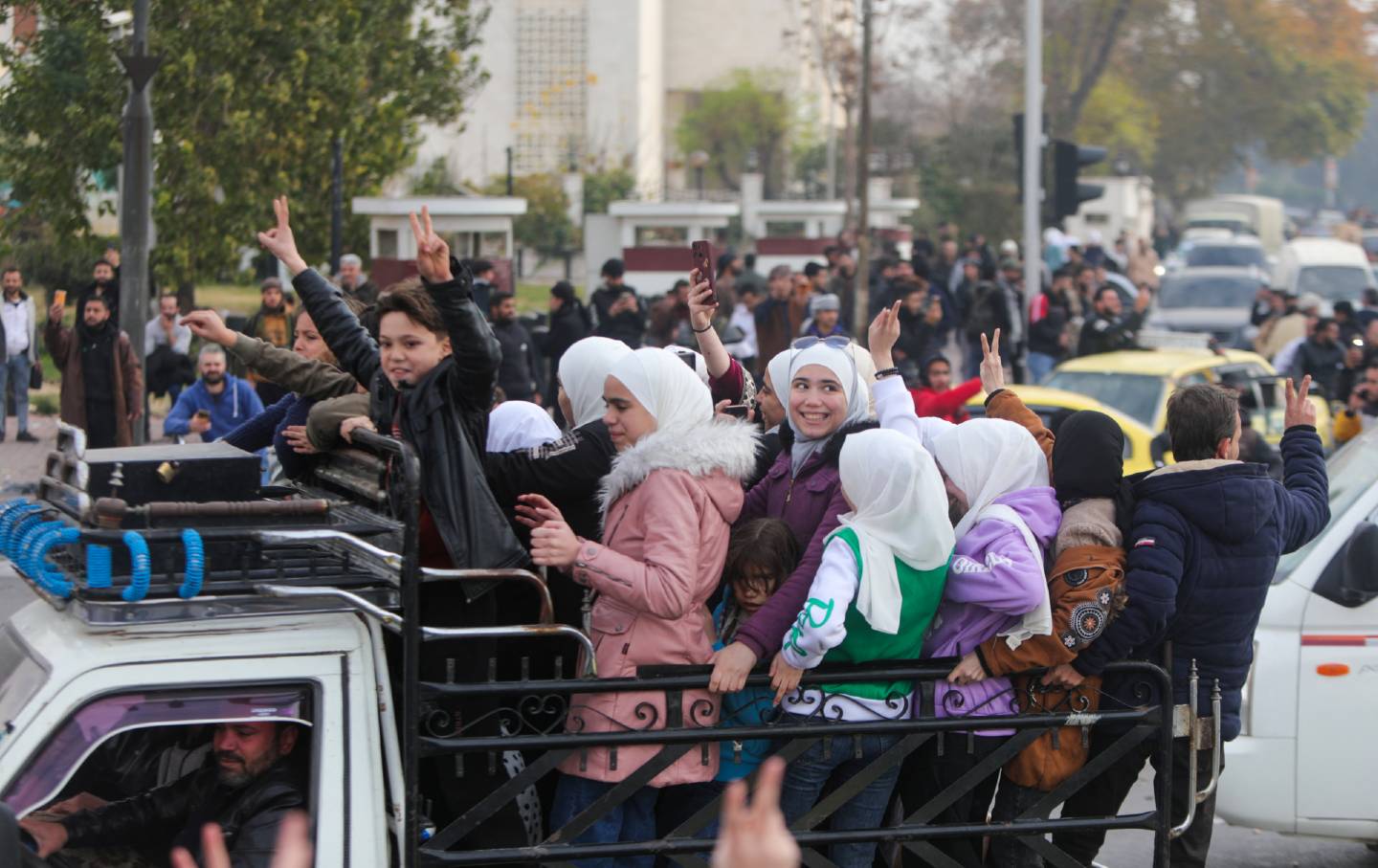
Celebrations in Syria May Be Premature Celebrations in Syria May Be Premature
The speed of the Assad dictatorship's collapse stunned even the opposition. But the result is a power vacuum that Israel and Turkey have already moved to occupy.

The Fall of Syria Changes Everything The Fall of Syria Changes Everything
Retired diplomat Chas Freeman and writer Pascal Lottaz discuss what happens now that Damascus is in the hands of Hayat Tahrir al-Sham.
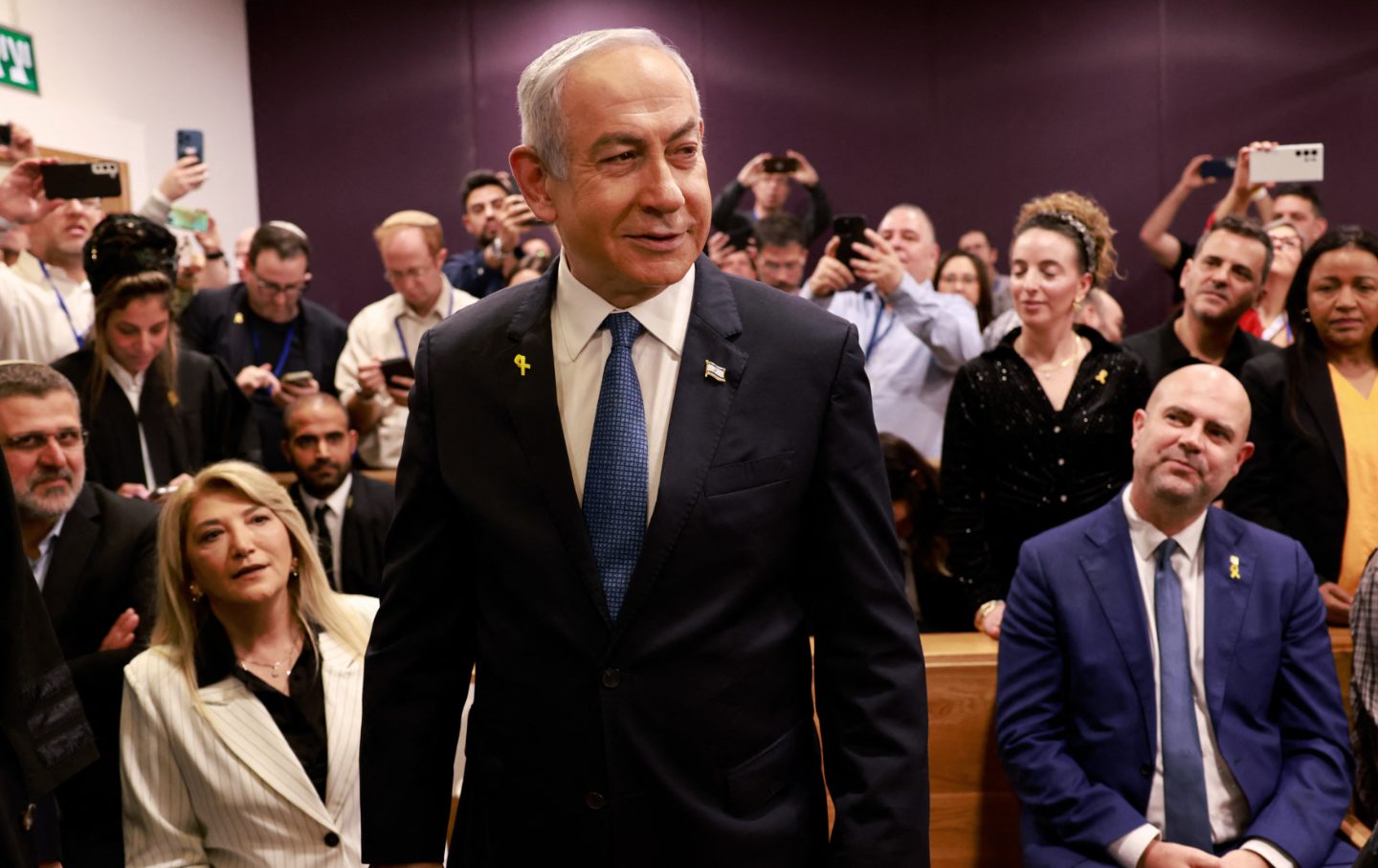
Netanyahu Must Be Brought to Justice. But We Can’t Stop There. Netanyahu Must Be Brought to Justice. But We Can’t Stop There.
This genocide is a massive criminal undertaking, and we must hold as many of its perpetrators accountable as we can.

My Brother, Chef Mahmoud Almadhoun, Died Because He Fed Gaza’s Starving Citizens My Brother, Chef Mahmoud Almadhoun, Died Because He Fed Gaza’s Starving Citizens
His killing by Israel sent a chilling message that no one is safe, including humanitarians who stand in the way of Gaza’s erasure.
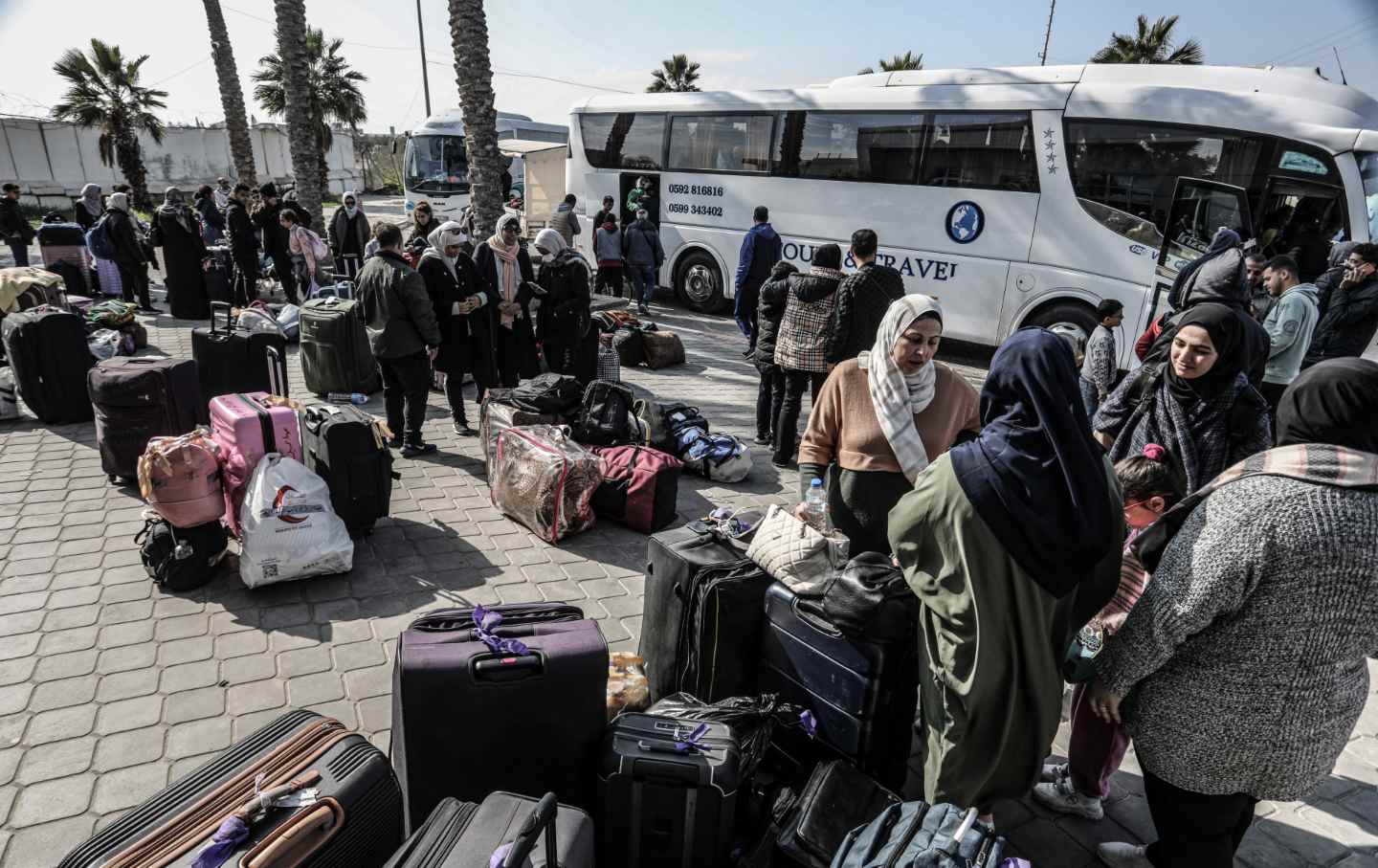
The Underground Network Helping Gazan Refugees Survive in Egypt The Underground Network Helping Gazan Refugees Survive in Egypt
A patchwork of volunteer-run mutual aid organizations has sprung up to tackle the severe problems facing people fleeing genocide.
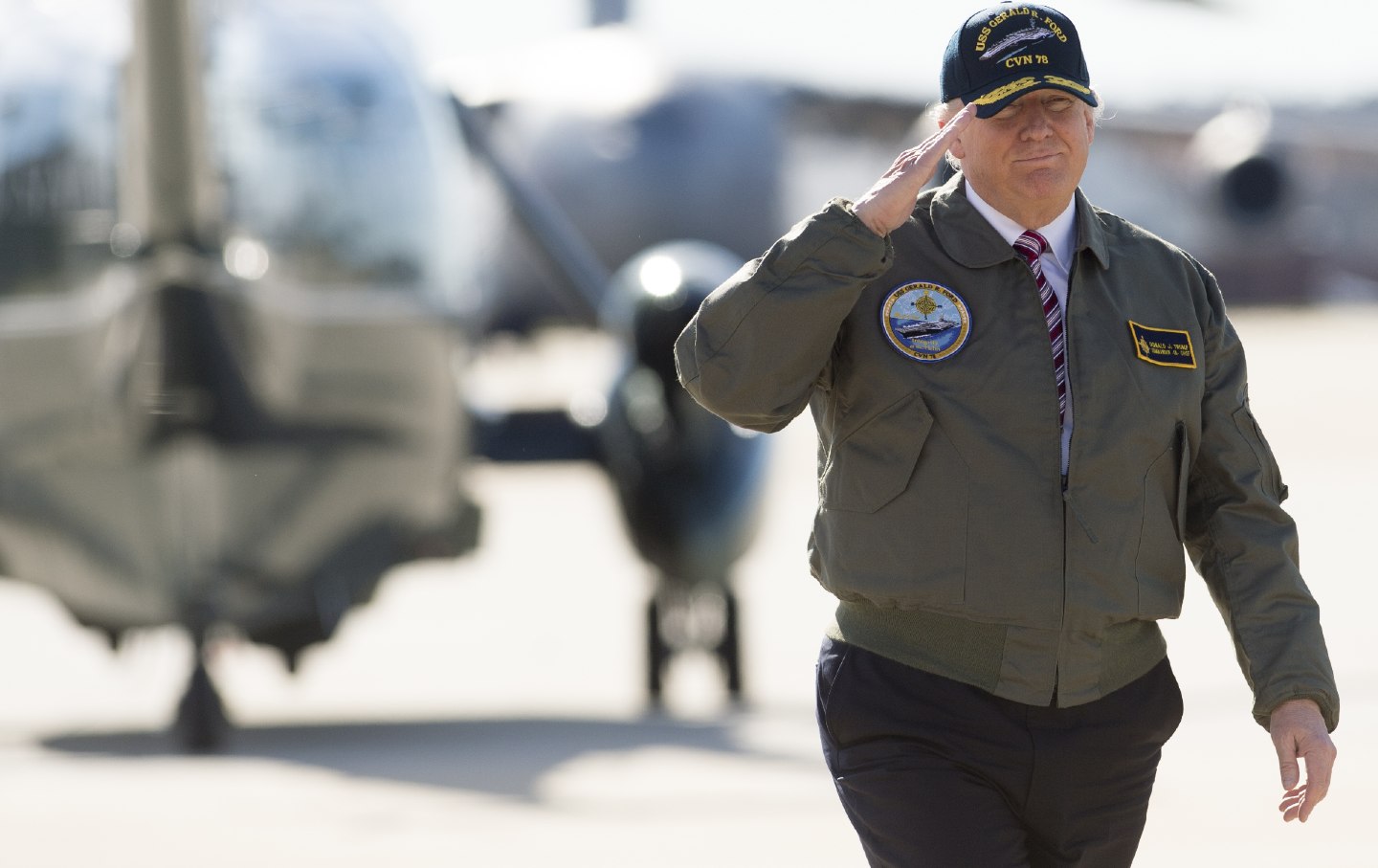
The Dangers of Trump’s Foreign Policy The Dangers of Trump’s Foreign Policy
Strategic incoherence and factionalism reign.


